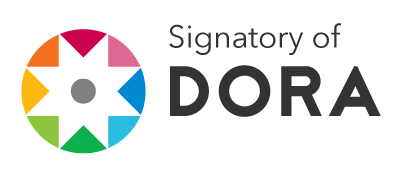PaO2/FiO2 RATIO, current volume, lactate and prognosis in sepsis
DOI:
https://doi.org/10.47456/rbps.v22i4.34040Keywords:
Sepsis, Lactic Acid, Artificial breedingAbstract
Introduction: Sepsis comprises a set of inflammatory reactions that lead to organic dysfunction. Rapid sepsis identification and appropriate therapy are associated with better prognosis. The collection of laboratory tests, such as blood gas and arterial lactate, should be performed within 1 hour after diagnosis. Objective: Featuring patients diagnosed with sepsis, who were hospitalized in the Northern and Southern Intensive Care Units and in the Adult Emergency Unit of the General Hospital of Grajaú. Methods: Exploratory-descriptive research of quantitative, prospective nature. Data were collected in the electronic medical records of patients included in the Institutional Adult Sepsis Protocol, who were subjected to invasive mechanical ventilation. Results were subjected to descriptive statistics analysis. Results: Nineteen (19) patients were included in the current study, 79% of them were men. Factors such as age, comorbidities, vasoactive drug using and invasive procedures appear to be associated with worsened sepsis. Arterial lactate recorded median value of 29.40mmol/L for female patients and 27mmol/L, for male patients. The PaO2/FiO2 ratio recorded median value of 258mmHg for female patients and 185.5mmHg, for male patients; mean tidal volume was 6.50ml/Kg for female patients and 6.0ml/Kg, for male patients - 94.73% of patients assessed in the current study have died. Conclusion: Sepsis was more often observed in male patients with comorbidities. These patients used invasive devices such as invasive mechanical ventilation and central venous catheter. They recorded high arterial lactate values, slightly reduced PaO2/FiO2 ratio, long hospitalization time and invasive mechanical ventilation using, as well as high mortality rate.
Downloads
Downloads
Published
How to Cite
Issue
Section
License
Copyright (c) 2021 Revista Brasileira de Pesquisa em Saúde/Brazilian Journal of Health Research

This work is licensed under a Creative Commons Attribution-NonCommercial-NoDerivatives 4.0 International License.
Authors and reviewers must disclose any financial, professional, or personal conflicts of interest that could influence the results or interpretations of the work. This information will be treated confidentially and disclosed only as necessary to ensure transparency and impartiality in the publication process.
Copyright
RBPS adheres to the CC-BY-NC 4.0 license, meaning authors retain copyright of their work submitted to the journal.
- Originality Declaration: Authors must declare that their submission is original, has not been previously published, and is not under review elsewhere.
- Publication Rights: Upon submission, authors grant RBPS the exclusive right of first publication, subject to peer review.
- Additional Agreements: Authors may enter into non-exclusive agreements for the distribution of the RBPS-published version (e.g., in institutional repositories or as book chapters), provided the original authorship and publication by RBPS are acknowledged.
Authors are encouraged to share their work online (e.g., institutional repositories or personal websites) after initial publication in RBPS, with appropriate citation of authorship and original publication.
Under the CC-BY-NC 4.0 license, readers have the rights to:
- Share: Copy and redistribute the material in any medium or format.
- Adapt: Remix, transform, and build upon the material.
These rights cannot be revoked, provided the following terms are met:
- Attribution: Proper credit must be given, a link to the license provided, and any changes clearly indicated.
- Non-Commercial: The material cannot be used for commercial purposes.
- No Additional Restrictions: No legal or technological measures may be applied to restrict others from doing anything the license permits.

























